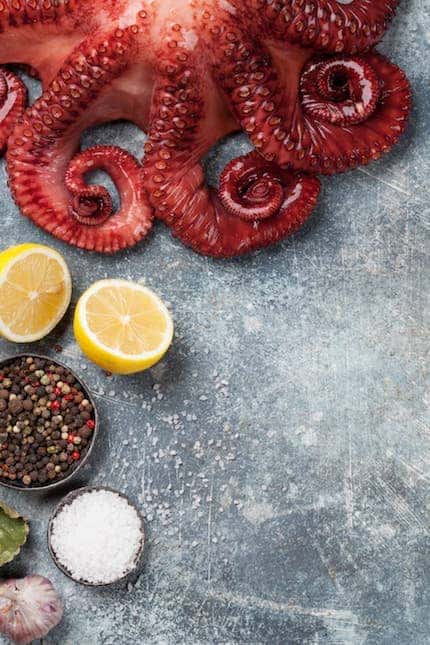Alchemy
Roasting proves that even Brussels sprouts have a sweet side.
This is a fundamental way to prepare a key ingredient. When you know the few basic ways to prepare whatever you lay your eyes on in the produce aisle or meat counter, then you can cook. No other skill is truly necessary.
Seemingly complex dishes are just combinations of these fundamentals. If you can poach a carrot and stew a joint of beef, then you can make boeuf aux carrots. It’s that simple.
The key is in having methods that enable you to create a workflow that matches your life and your own routines—the workflow of a home cook, in other words.
That’s something that nearly every recipe fails to convey.
All green, non-leafy vegetables work the same. These include green beans and peas, fava beans, asparagus, cabbage vegetables like Brussels sprouts and broccoli, and allium vegetables like scallions and garlic ramps.
Roasting is one way to prepare these vegetables, which makes them soft and remarkably sweet.
You wouldn’t think that something like a Brussels sprout possesses enough internal sugar to harbor a sweetly complex flavor—and you’d be right.
High heat, luckily, causes a chain reaction that transforms the vegetable’s abundant starches and astringent compounds into complexly caramelized sugars. It’s nothing short of alchemy, and once you can reproduce this simple technique, you’ll spot it in between the lines of any recipe that calls for putting these vegetables into a hot oven and leaving them until they brown.
You need only buy:
If you keep a Basic Inventory, you’ll already have:
Finishing salt
Fresh herbs like parsley
Extra-virgin olive oil or some other tasty fat
Sturdy herbs like bay leaves and thyme, or spices
Vinegar or lemon juice
And you’ll be using these Basic Tools:
A baking sheet
A bench scraper
A cutting board
A disposable knife
A large mixing bowl
A pair of kitchen shoes
Two or three clean dish towels
- What to Do
- Set yourself up.
The kitchen is a hazardous workplace with sharp knives and scalding water.
That way, you won’t be reaching for the trash every other minute.
Use it as well to keep your workspace tidy.
- Heat your oven.
I’ll explain why we use this temperature momentarily.
- Prepare the vegetables.
This section appears in every post I write about green vegetables. If you know what to do already, skip ahead.
You’ll wash these vegetables, first of all. This removes certain bacteria that remain after cooking which hasten spoilage. Washing can also remove residual agricultural chemicals.
Next, cut your vegetables into even pieces. This ensures that everything cooks in the same amount of time.
Here’s what to do for each one:
- Dry the vegetables.
Like other “high” cooking methods, roasting achieves interesting flavors by provoking a chemical chain reaction known as the Maillard reaction, which sugars and amino acids undergo whenever they’re exposed to very hot or prolonged heat.
Maillard (ma-yar, named after the twentieth-century French chemist who first described the effect) is at work whenever you brown a steak on the grill or a turkey in the oven. Dry conditions are important because the reaction can take place only at temperatures above the boiling point of water (212°F/100°C).
Since any remaining surface moisture must evaporate before this process can even begin, you always dry ingredients beforehand.
- Oil and season the vegetables.
We don’t want the surfaces of our vegetables to desiccate, however. So we coat them in a fat of some kind.
Now is not the time to add delicate things like parsley leaves or pomegranate seeds, regardless of what any recipe says. These ingredients will just wilt or burn beyond recognition.
Neither should you add sweeteners like honey, the sugars of which tend to blacken before your vegetables have finished.
Hardy herbs like thyme and bay leaf, on the other hand, not only stand up to intense heat but also require prolonged cooking, anyway, to release their essential oils. The same goes for many spices.
- Roast the vegetables.
Apart from browning these vegetables, the process of roasting tenderizes them and intensifies their internal liquids. Naturally, we want it all to occur before the vegetables burn.
It isn’t as complicated as it sounds. A high oven and evenly shaped pieces do the work for you.
Clean-up is easier, this way.
Then:
The vegetables will brown more evenly if they are evenly exposed to the heat. That’s why we arrange them into a single layer.
Experience has shown me that twenty minutes does the job, stirring once in the middle.
- Adjust seasoning then serve.
Since the heat of the oven causes salt to dissolve inwardly (where it helps to disintegrated fibrous walls, allowing internal juices to leech out and brown against the surface of each vegetable), the flavor of the final dish may seem curiously bland. A little extra salt and a few drops of vinegar or lemon juice restore the balance.
And that’s it. Roasted vegetables are fine at room temperature. You can also cover them and keep them warm in a low oven (275°F/135°C). They’ll be ready whenever you are.
 |
SHARE THIS ARTICLE

No Comments